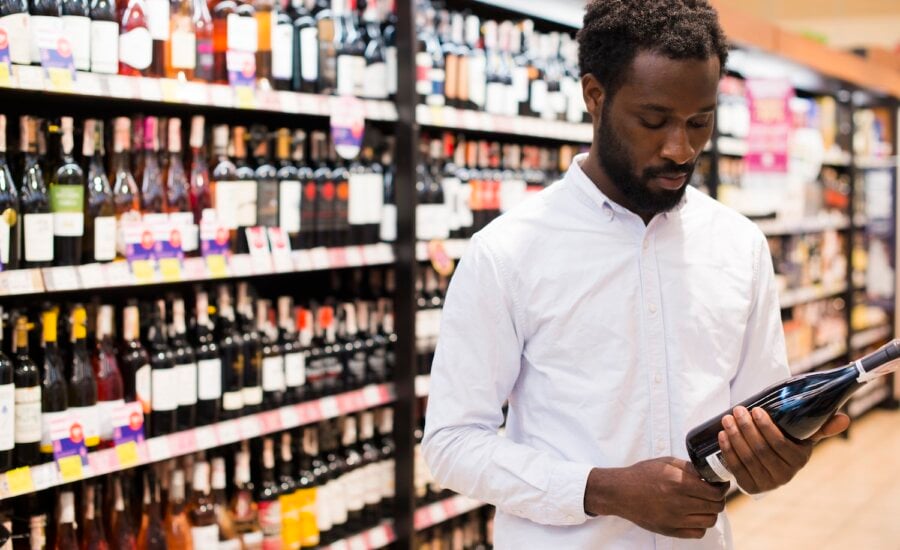Why is booze so expensive in Canada?
Making, let alone serving, alcoholic beverages is an invariably complex manufacturing process that’s affected by cost inflation from all sides.
Advertisement
Making, let alone serving, alcoholic beverages is an invariably complex manufacturing process that’s affected by cost inflation from all sides.

On average, Canadians of drinking age consume more than nine standard alcoholic drinks per week. If you’re one of those tipplers, you’ve probably noticed the cost of those drinks increasing, whether you’re imbibing at home or at your local watering hole.
According to Statistics Canada, store-bought alcoholic beverages rose in price by 5.9% between March 2022 and March 2023, and the price of liquor in general rose another 2.3% from June 2023 to June 2024.
Why are these prices going up so fast, and how can you enjoy cocktail hour without going over budget? Read on for some intel.

Scotiabank Passport™ Visa Infinite Card

SimplyCash Preferred Card from American Express

MBNA True Line Mastercard credit card
Alcoholic beverages don’t just spring fully formed from the Earth. They’re the product of base ingredients, sweat equity and time, plus the other supplies needed to get it to your glass, like packaging, labelling and transportation. These are all subject to the same general high inflation seen globally over the past few years.
For instance, a simple can of beer has a lot of inputs: grain crops (like barley or wheat) and other ingredients (like hops or flavourings), water, aluminum and labels, plus the energy to run the production line. If the cost of any of these items goes up, that’s going to affect the price of beer. That’s not even considering wages, which are a big factor as well. And if you’re buying that can of beer at a bar or restaurant, add on their business overhead and profits, too.
And then there’s taxes. These are hard to sum up, since every province and territory is different, but you can count on the fact that the price of your glass of wine or G&T includes some money for the government. The argument, of course, being that that cash goes back into things we need and use, like health care, education and public services.
Other official policies matter too. For instance, in Ontario, the Liquor Control Board and the provincial government set minimum prices for beverage alcohol. But everyone has to pay federal taxes on alcohol, which currently amount to between $0.04 and $0.74 on a six-pack of beer, $0.54 on a standard bottle of wine and $4.07 on a typical 750-mL spirits bottle. That applies no matter where you’re buying your beverage.
Then there’s climate change. Grapes for wine, rice for sake, wheat or corn for vodka: no matter what crop goes into your drink of choice, it’s being affected by changing weather patterns. A local example: in British Columbia, the 2024 grape crop was almost completely destroyed due to abnormal winter weather. Drought, heat waves and smoke from wildfires are hard on vineyards, too, meaning the more we experience these negative effects of climate change, the harder it’s going to be to make wine.
Very low-alcohol versions of beer, wine and spirits have become popular in recent years. But, you might have noticed they’re not exactly cheap either. That’s in part due to the same factors that affect alcohol prices: Raw ingredients, packaging, manufacturing, transportation and labour costs. Then the alcohol is typically removed after the beverage is manufactured, meaning it takes more time and effort than the boozy formula. In other words, this isn’t a simple can of pop: zero-proof takes on beverage alcohol are more expensive to make than the originals.
The major difference is taxes. Non-alcoholic beer, wine and spirits are exempt from federal alcohol-specific taxes. Does that balance out the increased cost of manufacturing these drinks? You’d have to ask the manufacturer—though on the craft scale, some say that it does, at least for beer.
The answer to this depends on what you like to drink and where you like to drink it. Prices vary based on the type of beverage and on your local rules and regulations. Plus, there’s no getting around the fact that popping a champagne cork in your kitchen is always going to be cheaper than doing it at your favourite fancy restaurant.
If you are out and about, perusing the menu will guide you toward the best bargains. Beer is often cheaper than wine and comes as a larger serving size, meaning a glass might last you longer. There’s also the option of splitting a larger portion like a bottle with your group, but do the math to see if it’s worthwhile.
At home, you often pay more for convenience. Yes, that means ordering a case of beer in for delivery is probably not the most budget-friendly choice. In some provinces, you might be able to shop around for stores with better deals. If your supermarket carries alcohol, a grocery credit card could help you earn rewards and cash back. Or if you live close to provincial lines (or that big country down south), a stock-up shop across the border could save you some cash. Just be aware of legal limits on what you can bring home.
And if you’re really motivated, there’s always the DIY route for making wine and beer. (For spirits, alas, you need a licence.) You can invest in equipment yourself, or find a local business that has all the gear on-site, so you just need to show up and press the metaphorical button. And who knows? If you’ve got a talent for crafting good drinks, you might just have found your next side hustle.
Share this article Share on Facebook Share on Twitter Share on Linkedin Share on Reddit Share on Email